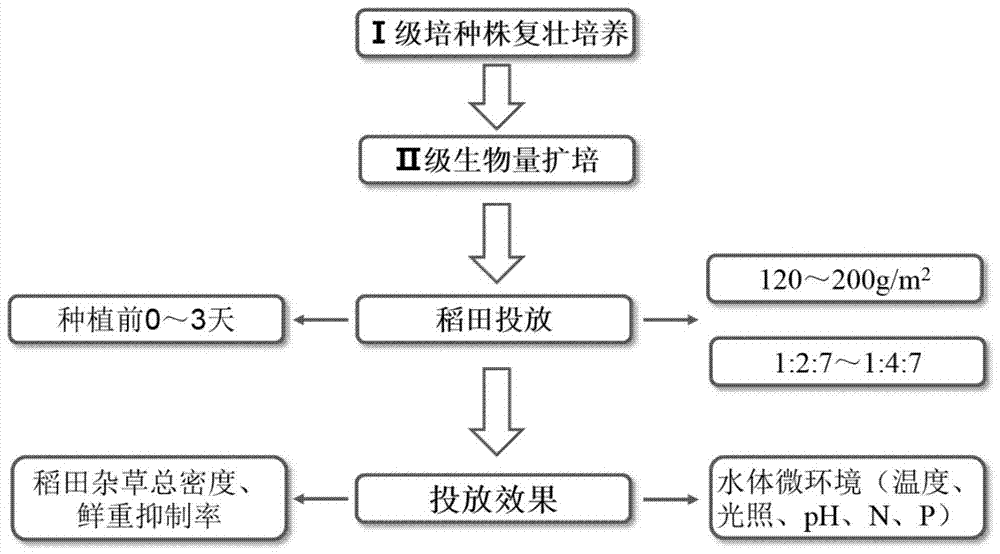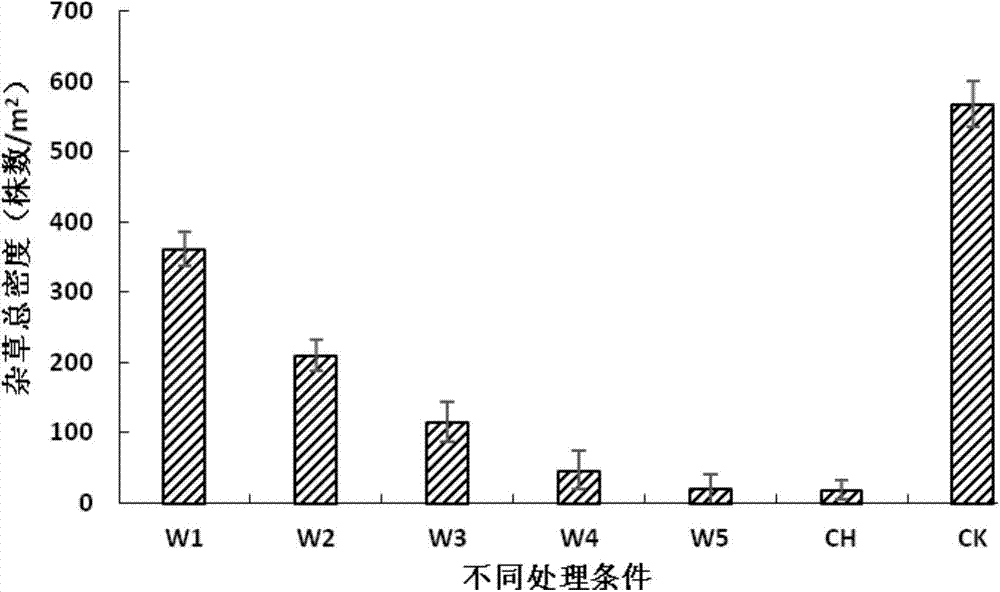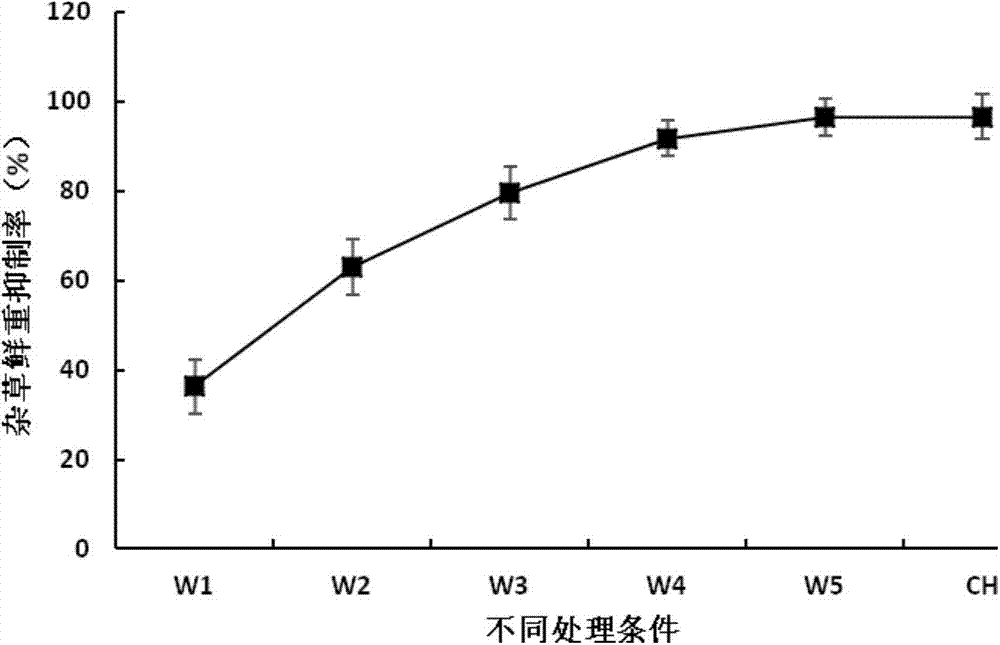Rice Field Grass Control Method
A technology for paddy fields and duckweed, applied in the field of paddy field grass control, can solve problems such as unreported research, achieve the effects of saving time, ensuring production, and reducing germination rate
- Summary
- Abstract
- Description
- Claims
- Application Information
AI Technical Summary
Problems solved by technology
Method used
Image
Examples
Embodiment 1
[0036] Implementation time: June 2013-October 2013
[0037] Implementation location: Qingpu District, Shanghai (clay soil, pH 6.5)
[0038] Test plan: 3 treatments were implemented in this test, namely control CK (without any weeding behavior), conventional CH (according to conventional field management, regular manual weeding), experiments W1, W2, W3, W4, W5 (40g / m 2 , 80g / m 2 , 120g / m 2 、160g / m 2 、200g / m 2 duckweed, do not do other weeding behavior). Each treatment was repeated 3 times, arranged in random blocks, and the area of each plot was 100m 2 , The field ridge was repaired up to 50cm.
[0039]1) With multi-root Ziping, less-root Ziping and Qingping as the initial materials, the varieties are expanded in a sterile room first, and the process conditions are: temperature 30°C, light intensity 3000±200lux, light-to-dark ratio 16:8 , pH is 4.5 in the complete culture solution cultured for 5 days; then each species of duckweed cultivated in the aseptic room is pl...
Embodiment 2
[0044] Implementation time: June 2013-October 2013
[0045] Implementation location: Qingpu District, Shanghai (clay soil, pH 6.5)
[0046] Experimental plan: In this experiment, 3 treatments were implemented, namely control CK (no weeding), conventional CH (regular field management, manual weeding), and test W (duckweed, no other weeding). Each treatment was repeated 3 times, arranged in random blocks, and the area of each plot was 64m 2 , The field ridge was repaired up to 50cm.
[0047] 1) With multi-root Ziping, less-root Ziping and Qingping as the initial materials, the varieties are expanded in a sterile room first, and the process conditions are: temperature 30°C, light intensity 3000±200lux, light-to-dark ratio 16:8 , pH is 4.5 in the complete culture solution cultured for 5 days; then each species of duckweed cultivated in the aseptic room is placed in the greenhouse small pond (the size of length × width × height is 1m × 0.5m × 0.8m) for large-scale cultivation ...
Embodiment 3
[0052] Implementation time: June 2014-August 2014 (clay soil, pH 6.5)
[0053] Implementation location: Qingpu District, Shanghai
[0054] Experimental plan: In this experiment, 3 treatments were implemented, namely control CK (no weeding), conventional CH (regular field management, manual weeding), and test W (duckweed, no other weeding). Each treatment was repeated 3 times, arranged in random blocks, and the area of each plot was 64m 2 , The field ridge was repaired up to 50cm.
[0055] 1) With multi-root Ziping, less-root Ziping and Qingping as the initial materials, the varieties are expanded in a sterile room first, and the process conditions are: temperature 30°C, light intensity 3000±200lux, light-to-dark ratio 16:8 , pH is 4.5 in the complete culture solution cultured for 5 days; then each species of duckweed cultivated in the aseptic room is placed in the greenhouse small pond (the size of length × width × height is 1m × 0.5m × 0.8m) for large-scale cultivation ,...
PUM
 Login to View More
Login to View More Abstract
Description
Claims
Application Information
 Login to View More
Login to View More - R&D
- Intellectual Property
- Life Sciences
- Materials
- Tech Scout
- Unparalleled Data Quality
- Higher Quality Content
- 60% Fewer Hallucinations
Browse by: Latest US Patents, China's latest patents, Technical Efficacy Thesaurus, Application Domain, Technology Topic, Popular Technical Reports.
© 2025 PatSnap. All rights reserved.Legal|Privacy policy|Modern Slavery Act Transparency Statement|Sitemap|About US| Contact US: help@patsnap.com



